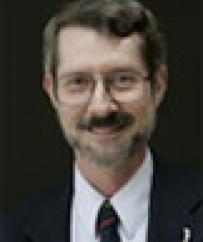Local politicians are fond of claiming that traffic is the number one political issue in Southern California. But despite all the attention, progress in relieving the region's congestion moves at a glacial pace. Now, however, with Metro implementing a federally-sweetened deal to bring congestion pricing to portions of the region's freeways, the transit planning paradigm in Southern California is approaching a dramatic shift. The following is a TPR-exclusive letter from Bob Poole of the Reason Foundation, who calls for local politicians to muster the political will to see this radical plan through to implementation.

Robert Poole
Dear Elected Representatives:
As you know, greater Los Angeles has the dubious distinction of being America's most-congested urban area. All realistic projections show that by 2030, despite investing tens of billions of dollars more into rail transit projects, about 90 percent of Angelenos will still use cars for most of their trips-and congestion will be even worse than today.
The most powerful tool we know of to decongest roadways is "congestion pricing"-charging a market price to use freeway lanes at those times and places where demand greatly exceeds capacity. We have more than a decade's worth of evidence that congestion pricing works, from California's two pioneering priced-lane projects-on I-15 in San Diego and on SR 91 in Orange County. Transportation planners from around the country have visited those projects and are now doing likewise-in Seattle, San Francisco, Salt Lake City, Denver, Minneapolis, Houston, Dallas, Miami, and soon in the Virginia suburbs of Washington, DC.
The federal government has played a key role in supporting these projects under administrations of both parties, and Congress has repeatedly supported and expanded the pricing options available to urban areas. Recently, Los Angeles became the latest participant in these efforts, when the U.S. Department of Transportation approved L.A. Metro's proposal for a pilot program to convert several failing car-pool (HOV) lanes to high-occupancy toll (HOT) lanes. Unfortunately, several members of Congress are opposing this effort; in addition, the needed legislative authorization from the Legislature has thus far not been forthcoming.
Several misunderstandings seem to underlie this lack of enthusiasm for converting HOV to HOT. First, it is argued that it is unfair to two-person carpoolers, who would have to share the cost of a toll to continue using these special lanes. But this ignores the fact that HOV-2 is coming to an end anyway. Many LA-area HOV lanes are so overloaded that they violate federal requirements of at least 45 mph average rush-hour speed, so they will have to be changed to HOV-3 soon in any case.
Second, critics don't seem to understand that market pricing will keep the HOT lanes uncongested even during the worst rush hours. That will offer anyone willing to pay the market price something not available today at any price-a fast, reliable trip on those occasions when you really have to be somewhere on time. Three-person carpools will still use the lanes at no charge, while those in two-person carpools can split the cost of the toll if they want a faster and more reliable trip than they get today.
Third, it's significant that L.A. Metro is the agency developing the HOT lanes. That's because reliable, uncongested lanes on L.A.'s freeways do double duty as the virtual equivalent of exclusive busways. Since market pricing can guarantee high-speed, uncongested traffic flow in the HOT lanes, buses from Metro, Foothill Transit, and other providers will finally be able to offer real express bus service.
Finally, we need to look beyond this initial pilot program to see what the future could hold if we are bold enough. The San Francisco Bay Area's long-range transportation plan calls for a seamless network of HOT lanes throughout Silicon Valley and the East Bay. A recent study by Parsons Brinckerhoff and EcoNorthwest found that the projected system, if in place by 2018 under a rapid delivery option, would save travelers 75 million vehicle hours a year by 2030. It would reduce overall vehicle hours of travel on the freeway system by 13 percent, and increase average speed for the entire system by 21 percent. And by making traffic flow smoother and faster, it would reduce emissions, including CO2.
L.A. Metro has not committed itself to a regionwide HOT network at this point, though two separate studies are under way to sketch out what such a system might look like, how much it would reduce congestion, and what it would cost. The Bay Area study found that the proposed system would pay for itself out of toll revenues. That's mainly because much of the system would not involve major new construction, since the Bay Area has such a large number of HOV lanes in place already that could be converted. Los Angeles is in a similar fortunate position.
The status quo is not an option. L.A.'s HOV lanes will continue to get overloaded with two-person carpools, getting more congested and violating federal standards. We have to change them anyway-so why not convert them to a far more valuable form of infrastructure, as Metro is prepared to do? HOT lanes, especially if developed into a seamless network, promise major congestion relief for motorists and a vast new uncongested guideway for regionwide express bus service.
What's not to like?
Sincerely,
Robert W. Poole, Jr.
Director of Transportation Studies
Reason Foundation
- Log in to post comments



